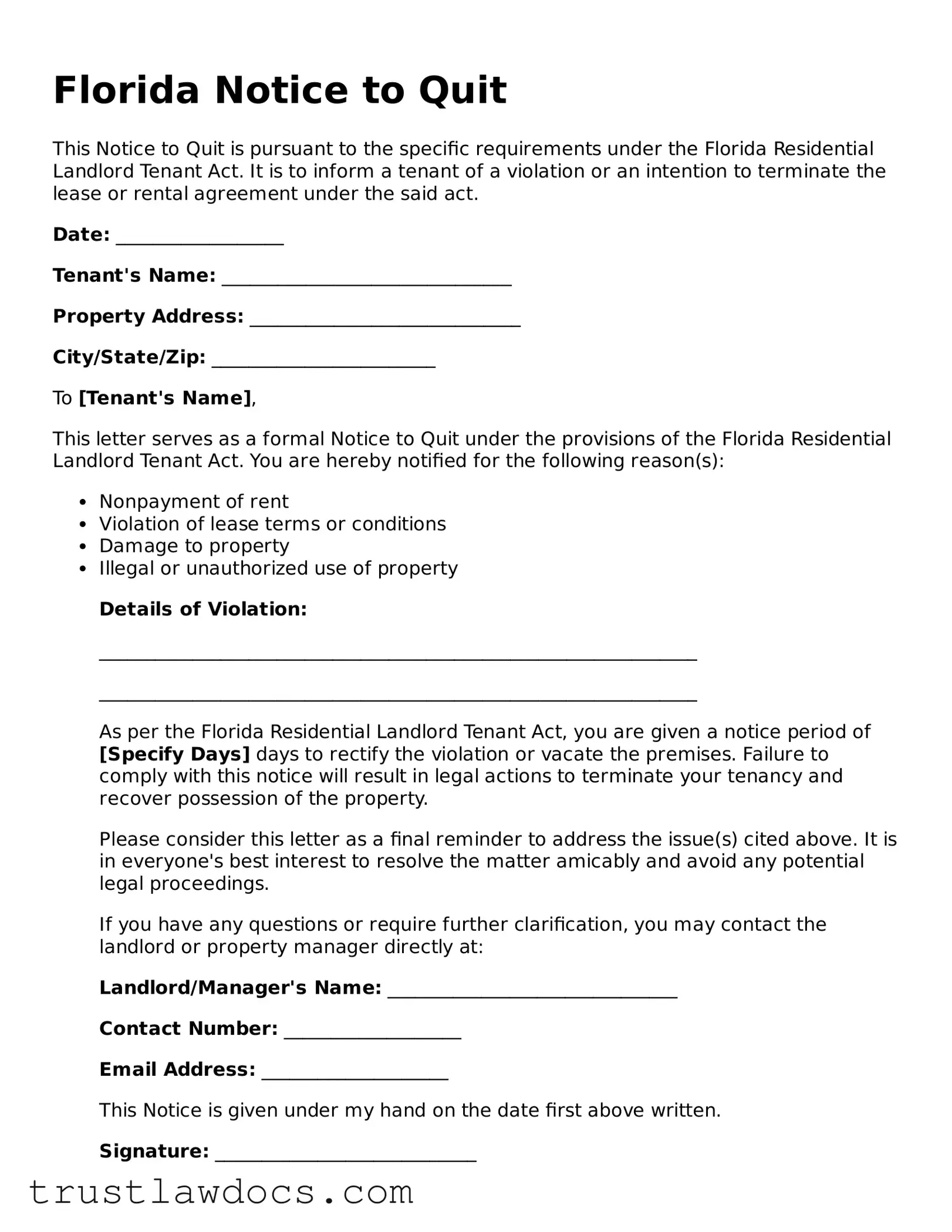What is a Notice to Quit form in Florida?
A Notice to Quit form in Florida is a document a landlord sends to a tenant to alert them of a violation of the lease agreement or to inform them that the rental period will not be renewed. This form serves as a formal request for the tenant to either rectify the identified violation within a specific timeframe or vacate the property by a certain date.
When is it appropriate to use a Notice to Quit in Florida?
In Florida, a Notice to Quit is typically used in two scenarios: when a tenant fails to pay rent on time or breaches other terms of the lease agreement, like damaging the property or engaging in illegal activities. It is also used to inform a tenant that the landlord does not intend to renew their lease agreement once the current term expires. The specific conditions under which this notice can be used are outlined in Florida's landlord-tenant law.
How much notice is required in Florida when issuing a Notice to Quit?
The required notice period in Florida depends on the reason for the eviction. For instance, if a tenant fails to pay rent, the landlord must give a Notice to Quit with at least a three-day notice (excluding weekends and legal holidays) before filing for eviction. If the eviction is for a lease violation other than non-payment of rent, the notice period might differ, typically providing the tenant with seven days to remedy the violation. It's crucial to consult current Florida statutes to ensure compliance with specific notice requirements.
What information should be included in a Notice to Quit form?
A Florida Notice to Quit form should include the date the notice is served, the name(s) of the tenant(s), the specific reasons for the notice (such as non-payment of rent or other violations), the timeframe in which the tenant must act (either pay the overdue rent or correct the violation), and the date by which the tenant must vacate the property if the conditions are not met. It should also include the landlord’s signature. Including detailed reasons for the notice helps ensure clarity and may be required for legal purposes.
Can a tenant dispute a Notice to Quit in Florida?
Yes, tenants in Florida have the right to dispute a Notice to Quit. If the tenant believes the notice was issued without proper cause or disagrees with the claims made by the landlord, they may challenge the notice by responding in writing or seeking legal advice. Sometimes, this can lead to a court hearing where a judge will determine the validity of the landlord's claims and the appropriateness of eviction.
What happens after a Notice to Quit is issued in Florida?
After a Notice to Quit is issued, the tenant has the option to either comply with the notice's demands within the specified period or vacate the property. If the tenant neither rectifies the situation nor leaves the property, the landlord may proceed with filing an eviction lawsuit with the court. This process involves legal steps where both parties can present their case, and a judge will make a final determination.
Where can I find a template for a Notice to Quit in Florida?
Templates for a Notice to Quit in Florida can be found online through various legal resources and websites specializing in landlord-tenant agreements. However, it's essential to ensure that any template used complies with current Florida law and is the most recent version to avoid potential legal issues. Consulting with a legal professional or using resources provided by local tenant’s rights organizations can also be helpful in obtaining an appropriate form.
